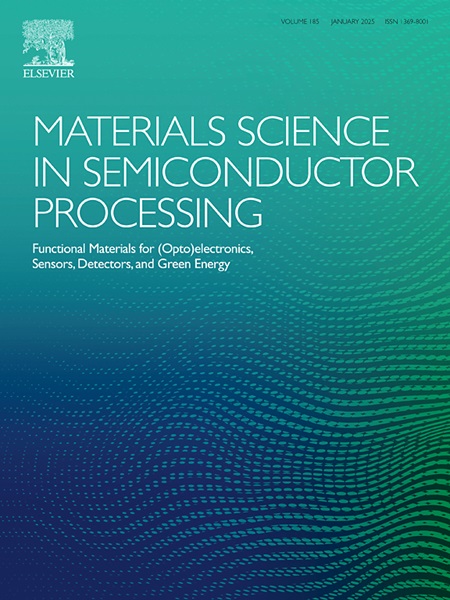Effect of a seed layer on the properties of CdZnTe thick films prepared by close-spaced sublimation method
IF 4.2
3区 工程技术
Q2 ENGINEERING, ELECTRICAL & ELECTRONIC
引用次数: 0
Abstract
In recent years, CdZnTe has attracted extensive attention due to its excellent properties. In this paper, CdZnTe thick films were prepared by close-spaced sublimation (CSS) method. An innovative method of introducing a seed layer is employed to enhance the performance of CdZnTe thick films and their devices. The effect of the seed layer on the properties of CdZnTe thick films was systematically analyzed. The results indicate that the seed layer significantly promotes the uniform distribution and preferred orientation of grains, thereby improving the crystalline quality of CdZnTe thick films. Additionally, the seed layer also enhances the performance of CdZnTe thick film ultraviolet photodetectors. The seed layer is thus a key factor in optimizing the performance of CdZnTe thick films, which is beneficial for promoting its applications in fields such as optoelectronic detection.
种子层对近间隔升华法制备的 CdZnTe 厚膜性能的影响
近年来,碲化镉(CdZnTe)因其优异的性能而受到广泛关注。本文采用近间隔升华(CSS)法制备了碲化镉(CdZnTe)厚膜。为了提高 CdZnTe 厚膜及其器件的性能,采用了引入种子层的创新方法。系统分析了种子层对 CdZnTe 厚膜性能的影响。结果表明,种子层能显著促进晶粒的均匀分布和优先取向,从而提高 CdZnTe 厚膜的结晶质量。此外,种子层还能提高 CdZnTe 厚膜紫外线光电探测器的性能。因此,种子层是优化 CdZnTe 厚膜性能的关键因素,有利于促进其在光电检测等领域的应用。
本文章由计算机程序翻译,如有差异,请以英文原文为准。
求助全文
约1分钟内获得全文
求助全文
来源期刊

Materials Science in Semiconductor Processing
工程技术-材料科学:综合
CiteScore
8.00
自引率
4.90%
发文量
780
审稿时长
42 days
期刊介绍:
Materials Science in Semiconductor Processing provides a unique forum for the discussion of novel processing, applications and theoretical studies of functional materials and devices for (opto)electronics, sensors, detectors, biotechnology and green energy.
Each issue will aim to provide a snapshot of current insights, new achievements, breakthroughs and future trends in such diverse fields as microelectronics, energy conversion and storage, communications, biotechnology, (photo)catalysis, nano- and thin-film technology, hybrid and composite materials, chemical processing, vapor-phase deposition, device fabrication, and modelling, which are the backbone of advanced semiconductor processing and applications.
Coverage will include: advanced lithography for submicron devices; etching and related topics; ion implantation; damage evolution and related issues; plasma and thermal CVD; rapid thermal processing; advanced metallization and interconnect schemes; thin dielectric layers, oxidation; sol-gel processing; chemical bath and (electro)chemical deposition; compound semiconductor processing; new non-oxide materials and their applications; (macro)molecular and hybrid materials; molecular dynamics, ab-initio methods, Monte Carlo, etc.; new materials and processes for discrete and integrated circuits; magnetic materials and spintronics; heterostructures and quantum devices; engineering of the electrical and optical properties of semiconductors; crystal growth mechanisms; reliability, defect density, intrinsic impurities and defects.
 求助内容:
求助内容: 应助结果提醒方式:
应助结果提醒方式:


